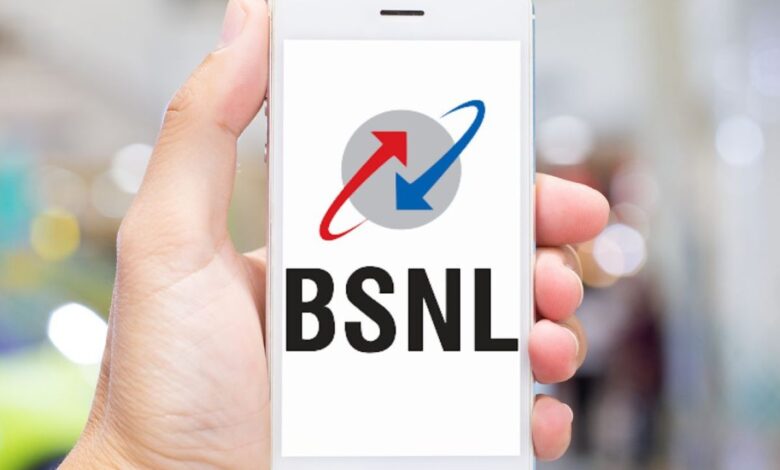Three reasons why a revival package for BSNL was cleared

Three reasons why a revival package for BSNL was cleared
The government has approved a package of Rs 1.64 trillion to resurrect the telecom provider Bharat Sanchar Nigam Ltd. (BSNL). Why is the government investing money in a firm that is losing money? What constitutes the package’s main components?
The government on Wednesday authorized a Rs 1.64 lakh crore booster infusion for state-owned telecom company Bharat Sanchar Nigam Ltd (BSNL), which is operating at a loss. in order to expand the operator’s network to 4G while DE-stressing its balance sheet? The four-year rehabilitation plan consists of both monetary and non-cash elements.
What constitutes the resurrection package for BSNL’s main features?
Three key areas of attention dominate the bundle. The government would prioritise improving BSNL services by administratively allocating BSNL spectrum in the 900 MHz and 1800 MHz frequencies at a cost of Rs 44,993 crore through equity injection.
In addition to giving Rs 13,789 crore as viability gap support for operating commercially unviable rural wire line operations completed between FY15 and FY20, the government would pay capital expenditures totaling Rs 22,471 crore for the deployment of an indigenous 4G stack by the operator.
How does the government intend to relieve financial pressure on BSNL?
According to the telecom department, BSNL and MTNL would receive sovereign guarantees from the Centre in order to raise long-term loans. They will be allowed to raise Rs 40,399 crore in long-term bonds. In order to further strengthen the balance sheet, BSNL’s AGR dues, which total Rs 33,404 crore, would be paid off by conversion into equity, and the government will provide the company with money to pay its AGR and GST dues.
Additionally, BSNL would reissue 7,500 crores of preference shares to the government. The Cabinet has also given its approval for BSNL to combine with Bharat Broadband Nigam Ltd, the nodal organisation for the BharatNet deployment, which would strengthen BSNL’s superior network.
Why did the government decide to invest money in a firm that is losing money?
While the decision to continue supporting BSNL and refrain from making it profitable like Air India is a departure from the government’s established privatisation strategy, the argument to keep the telecom operator afloat has its roots in three key government policies.
One is that the government can forward its plans for rural broadband thanks to BSNL. The operator helps the government extend to remote areas with low-income clients for activities that are normally not financially feasible. Almost 36% of BSNL’s optical fibre customers are in rural areas.
Second, unlike commercial telecom providers, BSNL has depended significantly on local component suppliers, promoting a vendor base in the country. The domestic component sector would be impacted by BSNL’s launch of 4G and, ultimately, 5G services.
Last but not least, the government views BSNL as a strategically vital corporation for it to be privatised due to the presence of its network assets in border areas and places plagued by left-wing extremism.
What possible effects may a resurrection package have?
The Center anticipates that BSNL will be able to provide 4G services, enhance the quality of its current offerings, and achieve financial viability with the help of these initiatives. Additionally, it anticipates that after implementing this recovery strategy, BSNL will recover and generate a profit in 2026–2027 (April–March).
This is the government’s second significant revival package in 2019. Following the announcement of a Rs 70,000 crore package in 2019 that was primarily intended to support the voluntary retirement programme for MTNL and BSNL, this is the government’s second significant revival package.
The Cabinet accepts the merging of BSNL and BBNL and a $1.64 billion revitalization plan.
During a cabinet meeting on Wednesday, the Union Cabinet approved the merger of Bharat Sanchar Nigam Limited (BSNL), a state-owned telecom company, and Bharat Broadband Network Limited (BBNL).
Using the country’s 1.85 lakh village panchayats’ Universal Service Obligation Fund, an extra 5.67 lakh kilometres of optical fibre would be added to BSNL’s network as a result of the merger (USOF). It now has a network of optical fibre cables spanning more than 6.83 million kilometres.
During today’s cabinet briefing, Union Minister Ashwini Vaishnaw also disclosed a Rs 1,64,156 crore revival package for BSNL. Acceptance of such a rejuvenation package was most recently seen in 2019.
Elements of the revival package include
Services’ development and quality
BSNL’s distressed balance sheet
BSNL’s optical fibre network should be expanded.
The cabinet also opted to replace statutory liabilities with Rs 33,000 crore in equity. The assets would be retained by the government, with BSNL acting as its executing branch. BBNL employs less than 200 workers. ET Telecom reported BSNL CMD PK Purwar as saying, “We have said in our proposal that we may integrate them into BSNL and contracts would be followed, and revenue share agreements will be honoured.” The government announced in April 2022 that the special-purpose vehicle (SPV) for the massive BharatNet project, BBNL, will be incorporated into BSNL.
Edited and proofread by Nikita Sharma






